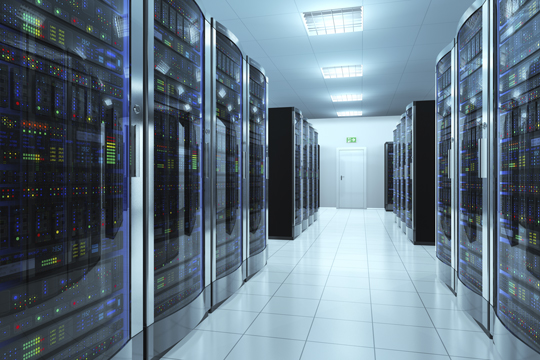Les centres de données modernes sont remarquablement complexes sur le plan technologique, et leur fonctionnement sûr et efficace nécessite une surveillance et une gestion étroites et continues.
Maintenir une température adéquate est l'une des tâches les plus importantes des gestionnaires de centres de données. Si la température et l'humidité atteignent des niveaux excessifs à l'intérieur du centre de données, de la condensation peut se former et endommager les machines. Cela peut entraîner des dommages et des perturbations considérables ; il faut donc l'éviter à tout prix. Heureusement, diverses technologies permettent de maintenir la température des centres de données à un niveau optimal.
Il existe de nombreuses façons de refroidir un centre de données. Le refroidissement indirect par air utilise l'air extérieur, mais grâce à un échangeur de chaleur air-air, l'air extérieur est maintenu dans une boucle séparée, assurant ainsi le refroidissement sans pénétrer dans la salle des serveurs.
Les méthodes de refroidissement indirect ont l'avantage de ne pas contaminer l'air intérieur par les polluants extérieurs et l'humidité. Un échangeur de chaleur sépare les deux flux d'air tout en transférant la chaleur de l'intérieur vers l'extérieur du centre de données. Ainsi, l'air ambiant et l'air intérieur ne se mélangent jamais.
Le refroidissement à sec est généralement suffisant si le centre de données est situé dans une zone où la température est constamment basse, ce qui signifie qu'il n'y a pas d'eau. Cependant, la pulvérisation d'eau côté air ambiant de l'échangeur de chaleur produit un effet d'évaporation, ce qui entraîne une baisse de la température de l'air intérieur. Cette méthode est appelée refroidissement par évaporation indirecte (IEC).
Idéalement adapté aux climats chauds et secs, l'IEC offre un excellent potentiel de refroidissement avec un faible coût d'exploitation et d'investissement initial. Des réductions de température ambiante de 6 à 8 °C (10 à 15 °F) sont généralement observées en été. L'IEC permet jusqu'à 281 TP3T d'économies d'énergie par rapport au free cooling classique et 521 TP3T par rapport aux alternatives free cooling à air.
Le refroidissement par évaporation nécessite un échangeur de chaleur à plaques alliant haute efficacité et faible perte de charge, offrant une solide protection contre la corrosion et une étanchéité fiable. Les échangeurs de chaleur à flux croisés répondent à toutes ces exigences tout en offrant une capacité de refroidissement exceptionnelle.
Nos échangeurs de chaleur à flux croisés, notamment dotés de la technologie de refroidissement par évaporation, offrent une alternative efficace, économique et respectueuse de l'environnement aux méthodes de refroidissement traditionnelles.
